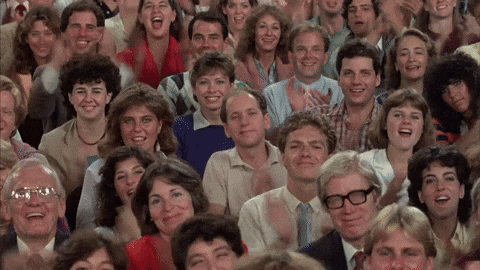🌊 Deep Dive: Why 15 people beat 1,500... The small event advantage that big competitors can't copy
Why 15 people who connect beats 1,500 who don't and how to make that happen
Hey all! A reminder that I'm hosting an ask me anything session in London about funding for female founders with Nanna Soenya (founder of the first grant for Black and brown women in the UK). There are still some in-person and virtual tickets, you can grab one here. I’ve realised that a lot founders think they need massive audiences to create meaningful impact.
They chase the biggest venues, the most attendees, the widest reach. They obsess over vanity metrics like "impressions" and "reach" while completely missing the metrics that actually drive business growth.
But they're optimising for the wrong game entirely.
Last month, I hosted a beauty mastermind for 15 stylists and beauty brand founders. By traditional metrics, it was embarrassingly small. By the metrics that actually matter for building a sustainable business, it was perfect.
Here's what I witnessed: stylists learning directly from brand founders about product development challenges they'd never considered. Brand founders finally understanding the real operational struggles salon owners and stylists face daily—things like inventory management, client retention, and staff training that never make it into industry reports. Cross-industry connections that would never happen at a massive conference where everyone stays in their designated "networking zones."
Everyone walked away with a strategic business plan and concrete next steps. More importantly, they walked away with 2-3 new relationships that will compound in value over the coming months.
This isn't just about hosting better events. It's about understanding the community compound effect—when each person who joins your network makes it exponentially more valuable for everyone else, creating a multiplier effect that scales without requiring you to scale.
Think about it like this: If you have a phone but nobody else does, it's worthless. Add one person, and suddenly you can call them—some value created. Add 50 people, and you have a valuable network where everyone can reach everyone.
Add 5,000 people, and... well, you still have a communication network, but now it's overwhelming, impersonal, and ironically less valuable to any individual user.
The same principle applies to business communities, but most founders miss the sweet spot entirely.
They think bigger is always better.
They're wrong.
The Magic Number Nobody Talks About
Through two years of trial and error (mostly error), I've discovered that 40-50 people is the optimal size for creating genuine business connections that lead to actual collaborations, partnerships, and growth. Not 400. Not 40,000.
Somewhere between 40-50.
Here's the mathematics behind why this works: In a room of 50 people, there are roughly 1,225 possible connections (50 x 49 ÷ 2). That's manageable. You can actually see and assess everyone in the room. You can be strategic about who you want to meet.
You can invest real time in conversations that matter.
Compare this to a 500-person conference with 124,750 possible connections. The cognitive overload is immediate. The paradox of choice kicks in. People retreat to their existing networks or wander aimlessly through a sea of strangers, collecting business cards they'll never look at again.
At our events, the average attendee makes genuine contact with 1-2 new industry connections — people they actually follow up with, collaborate with, and build ongoing relationships with. I track this not through surveys, but through watching what happens months later: joint ventures, referral partnerships, collaborative projects that emerge from our community.
Maya's story illustrates this perfectly. She's a celebrity stylist who also supports her mum's salon, and they're hoping to expand into hair education. She attended her first event earlier this year feeling uncertain about the business side of her expansion plans. After attending multiple events, she's now part of our extended community. I'm currently reviewing her business plan as she develops this new venture—something that grew directly from connections and insights gained at our gatherings.
Her initial connections at our events have evolved into ongoing mentorship and strategic guidance that extends far beyond the events themselves. This is the compound effect in action. '
But it's not happening because we're big—it's happening because we're small enough for relationships to actually form, deepen, and multiply.
The Framework: How to Build Your Own Community Compound Effect
If you want to create this for your own business, here's the practical framework I've developed through hosting dozens of events and making every possible mistake:
1. Start Stupidly Small (10-15 People)
This is where most founders fail before they even begin. They want to launch with a bang—200-person venue, big-name speakers, massive marketing push. They're thinking like a corporate conference planner, not a community builder.
Don't try to fill a 200-person venue on your first attempt. Plan an intimate event for 10 people. Yes, 10. It will feel small. Do it anyway.
Feed and water them properly. This isn't optional. If you're asking people to come during dinner time, the least you can do is feed them well. If you don't have a massive catering budget, that's fine—just have an event for the number of people you can afford to cater for properly.




